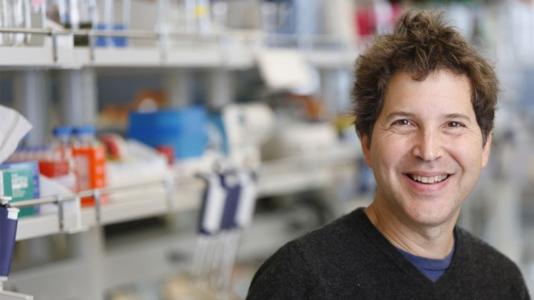David Baker, a longtime user of the Argonne Leadership Computing Facility and the Advanced Photon Source at Argonne, is one of three recipients of the chemistry prize for 2024.

By Julie Parente and Andre Salles
The scientist awarded the 2024 Nobel Prize in Chemistry for using computer software to invent a new protein used supercomputers and ultrabright X-rays at two facilities located at the U.S. Department of Energy’s (DOE) Argonne National Laboratory. David Baker, a University of Washington professor of biochemistry and head of the Institute for Protein Design, shared the prize with Demis Hassabis and John M. Jumper of Google DeepMind, who won for protein structure prediction.
Baker's pioneering research focuses on understanding how chains of amino acids fold into functional proteins, a process essential to all life. Accurate computer models of this process are crucial for deciphering how proteins work and how misfolded proteins can lead to diseases such as Alzheimer's and Parkinson's.
Baker has been a user of multiple beamlines at the Advanced Photon Source (APS), one of the premier X-ray light sources in the world, for more than 10 years. Baker’s experiments have centered around using the extraordinarily bright X-ray beams of the APS to obtain structures of proteins designed on supercomputers, to verify their characteristics. The APS is a DOE Office of Science user facility.
Baker and his University of Washington colleagues have conducted experiments on six beamlines, most frequently the Northeast Collaborative Access Team (NE-CAT) beamline at 24-ID and the National Institute of General Medical Sciences and National Cancer Institute Structural Biology Facility (GM/CA) at 23-ID. Baker has used both beamlines continuously since 2011, with new papers from those experiments published regularly.
He has also made use of the SouthEast Regional Collaborative Access Team (SER-CAT) beamline at 22-ID, the Lilly Research Laboratories (LRL-CAT) beamline at 31-ID, the Life Sciences Collaborative Access Team (LS-CAT) beamline at 21-ID and the Structural Biology Center (SBC), previously at 19-ID. In total, Baker’s teams have deposited roughly 140 structures into the international protein databank.
John M. Jumper was also a user of the APS, conducting research between 2017 and 2022 on proteins and RNA at LS-CAT and at the Biophysics Collaborative Access Team (Bio-CAT) beamline at 18-ID.
For more than a decade, Baker also leveraged the computational power of Argonne's Leadership Computing Facility (ALCF), a DOE Office of Science user facility, through the Innovative and Novel Computational Impact on Theory and Experiment (INCITE) program. This access allowed him to perform complex simulations of protein structures, contributing to significant breakthroughs in understanding protein behavior.
Baker developed Rosetta, an open-source software suite that hundreds of labs worldwide now use to predict and design protein structures. He and his team also have developed new protein folds and have designed and built functional enzymes and engineered protein interactions that previously did not exist in nature.
Baker’s research, supported by user facilities at Argonne and other DOE national laboratories, has made significant advancements toward developing novel therapeutics that one day may enable drug developers to create treatments that precisely target specific disease-causing molecules within the body.
